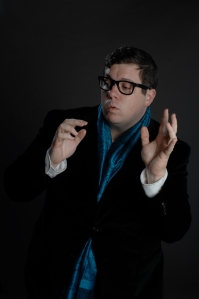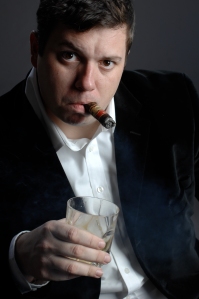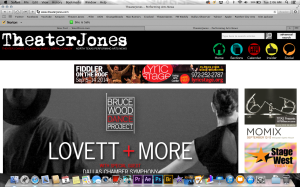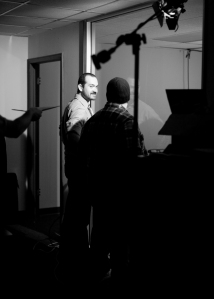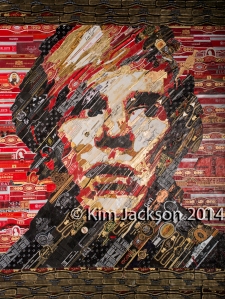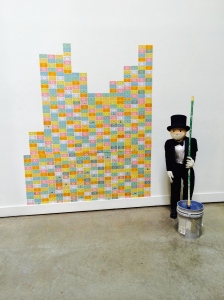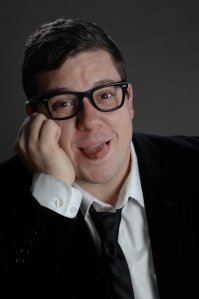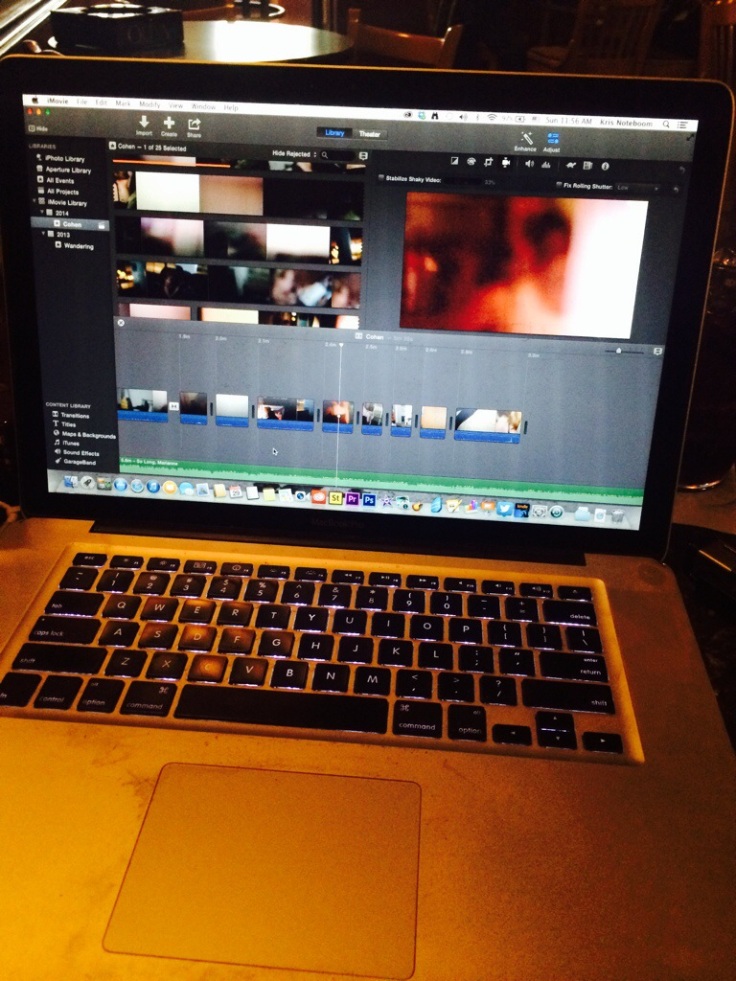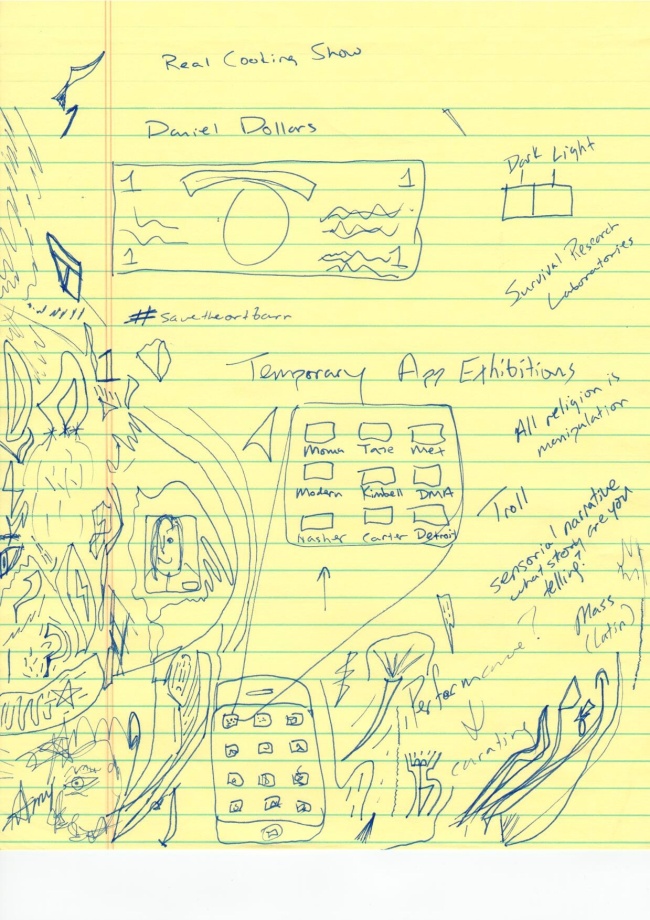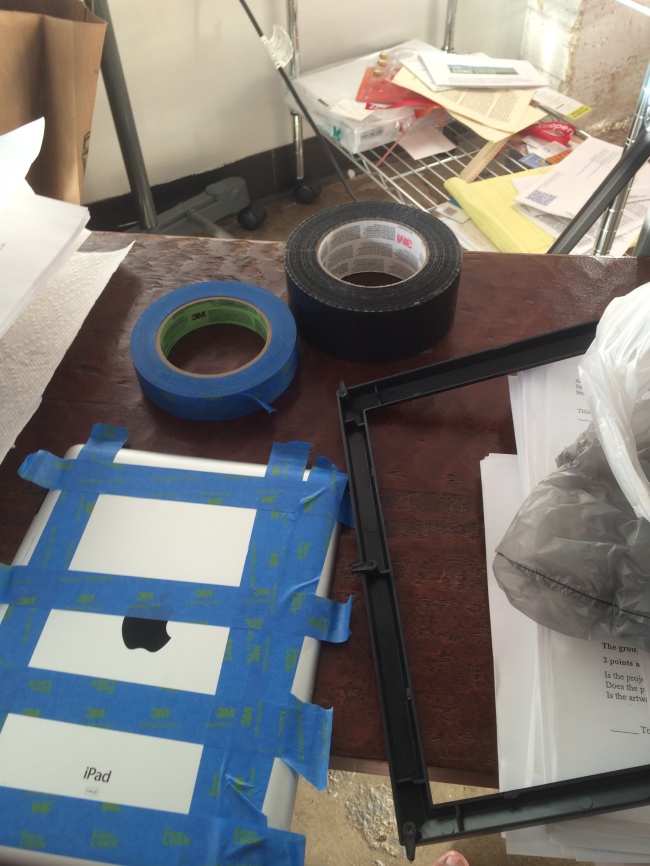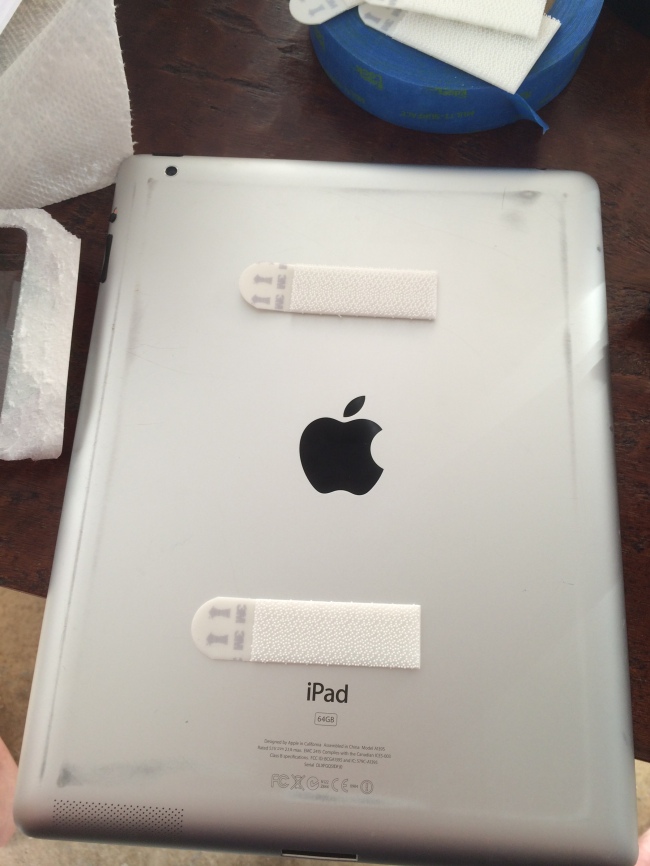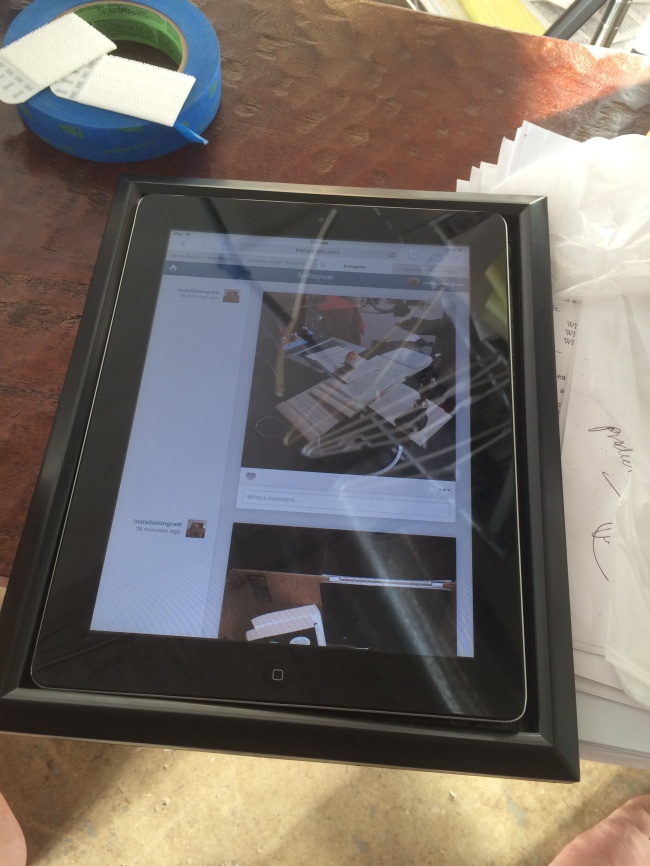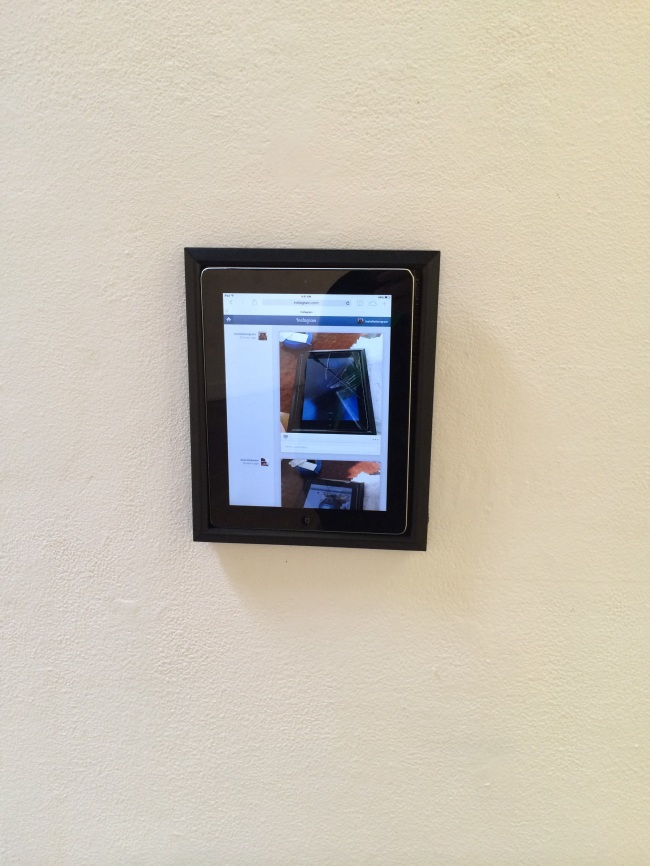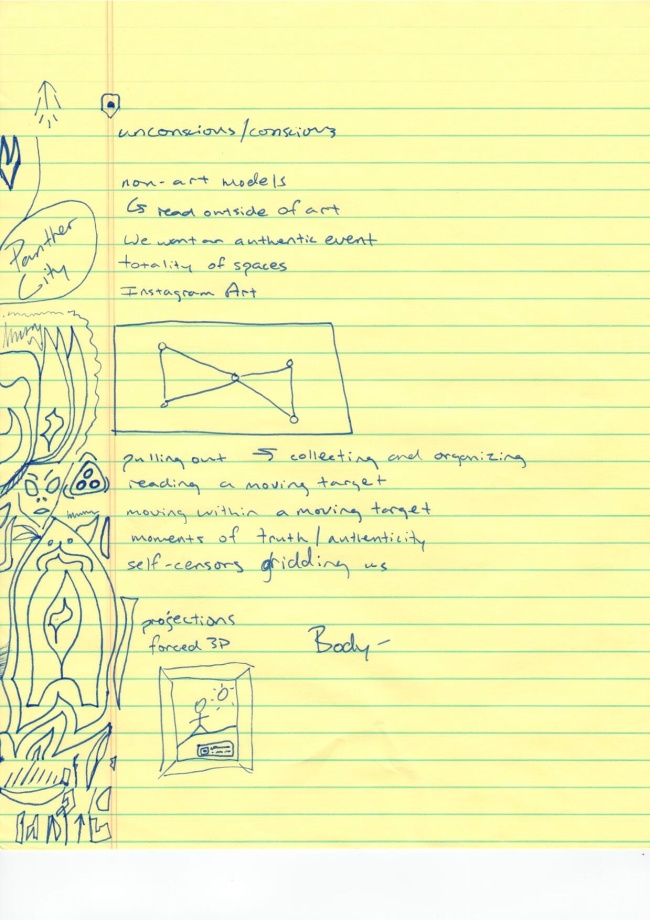Our assignment in Performance Installation this week was to write about the space our final performance takes place in. Given the success of my online performance installation, I emailed Tom asking about using the internet for my “space”. I was excited about the proposition.
Unfortunately, in the context of the class, we have to be able to present our final project in the Art Barn gallery space. This, of course, goes against a lot of what the course has taught us. We talk so much about going site specific and the death of the traditional art space and whatnot, but at the end of the day this is a class and we have to present something tangible for a grade. So, I’m kind of back to square one…
Therefore, I approached the assignment to analyze the space in a very literal way. I went point by point and tried to answer the specific questions asked in the assignment, while also throwing random thoughts in a long the way…
Walter Benjamin – Art in the Age of Mechanical Reproduction
Postmodernism
What’s next?
Connection
Communication
Digital barriers to communication
We live in time where we’re the most connected we’ve ever been, via the internet, social networking, and smart phones, yet also the least connected we’ve ever been because we experience this connection through digital barriers.
How can I subvert the digital barrier, the idea that anything worth seeing or experiencing can be found on a screen?
How do I address a world where a ‘friendship’ can be established with someone you’ve never actually met? What is it that causes this connection? Similar interests? Mutual connections? Randomness?
I guess I kind of want to lull people into a sort of ‘unawareness’ as a means of eliciting an authentic or honest reaction to the stimulus of the art/installation.
I can do this by drawing them into something familiar, and either slowly or traumatically pulling the rug out from under them. Or maybe it’s a slow reveal.
Traumatic kernel of the Real vs. slow realization
IDEA: Paint the Mona Lisa
Set up a print of the Mona Lisa. Then set up painting stations, complete with a canvas on an easel, a basic set of oil paints, brushes, etc., and a brief how to guide on oil painting. Allow people to attempt to recreate the famous painting. The results will reveal two things. First, that art is, in fact, hard. And second, that everyone has artistic-ness inside them, if only they’ll access it every once in awhile. Hmmm…
Step it up by doing the same thing with a Pollack action painting. Maybe even
Art, since it can now be digitally reproduced or viewed, invites multiple meanings (subjectivity), thereby diminishing (diluting) its meaning – paraphrase from Ways of Seeing
The digital barrier can cause a change in perspective/loss of context
The atmosphere around us (sounds, setting, etc.) can change how we see something through a reproduced/digital lens. (Looking at art from the MOMA while sitting at a bar).
Kris Noteboom studied Performance and Rhetoric at the University of North Texas, and Aesthetic Studies at the University of Texas at Dallas, earning a Masters and PhD respectively. Starting in the theater at a young age, Kris has spent most of his life pursuing art and knowledge. Unfortunately, in his estimation, this pursuit coincided with the deconstruction of traditional art as we understand it. The move into postmodernism, bringing about relativism and poststructuralism, created an artistic atmosphere in which everyone’s expression is given equal weight, thus diluting the core of the arts and causing broad public abandonment. Starting his academic work studying satire and irony, noting its prevalence in the age, Kris has moved from this mindset to one of a search for authenticity. In a world where everything is hyper-conscious, he wonders what the next explosion of unconsciousness will bring us. His performance work seeks to challenge the notions of self-awareness and culture as a pastiche of the past. His work often aims to create a situation whereby his audience is, briefly, separated from consciousness, anticipation, and self-awarenes, in favor of a moment of pure authenticity. And honest reaction to something, not immediately compared to its antecedents, but taken unconsciously as something spontaneous and new, and thereby inviting the question, is such a notion even possible right now?
Part 1
Choose a space within the art barn: Not sure. Could be anywhere. Classic white walls of an art gallery preferable. Instead f going for the alternative or edgy space, go as traditional as possible.
How do I relate to the space…
Visually: It’s an art gallery, which automatically establishes a frame of expectancy
Aurally: Industrial mixed with a hushed sterility
Scale: Large, expansive rooms, meant to be moved around
Sense of Proportion: Purposely attempting to take proportion away
Physical Relationship: A art gallery necessitates purposed, yet flanier type movement
Personal Memories: Limited
What is the history of the space?
– Built to be like a Black Mountain College type artistic enclave and display space. Currently threatened by demolition
Are you a privileged informant?
– Probably
What is your ethno-self-analysis?
Who are you? How would you describe yourself?
Artist
What are the criteria, definitions, systems, by which you define yourself?
An artistic/Academic level of competence in my art
What does the telling of the history tell you about yourself and perspective?
Even as an artist, I don’t access as much art as I should because I come from a culture that doesn’t access, or even value, art.
How does time relate to the space?
There are no clocks. Nothing to mark the time. Like a Vegas casino, galleries are often mark less and serpentine, allowing the spectator to get lost in them and lose time.
What implicit or other meanings embedded or bundled with the space?
Entering into an art gallery immediately creates a frame of expectancy, or even a barrier. And going to see art is not so special occasion anymore due to the mechanical reproduction of artwork into our world. Therefore, there is no immediacy to visit an art gallery, thereby creating the assumption that the only people who do visit an art gallery are high minded artistic and society types. Both of these things work together to keep people out of art galleries.
What meanings are real, imagined, or imposed?
This is really a subjective answer. The feeling that art today is somehow impenetrable, perhaps due to the loss of meaning brought forth by reproduction, simulation, postmodernism, relativism, etc. can be all three of real, imagined, and imposed. I think the average person imposes this meaning more often than not, but even as an artist, seeing a piece of performance art of installation that does little but to perplex makes it feel real.
Cultural, Social, Economic, Personal?
Again, this real is a ‘pick one’ type situation. Cultural, social, and personal would seem to overlap quite a lot. For instance, the anti-intellectual, anti-art movement of right wingers could easily be said to stem from cultural, social, and personal issues. Religion versus art. The economic question is, perhaps, more interesting. Art does have an economic barrier stigma, whether true or not.
The average person’s interaction with art usually either consists of hearing the exorbitant selling prices of famous works quoted back to them on the news, or seeing the bad examples of art and performance held up as an indictment of the entire field. How do we get them to see the in between?
What are the collective memories?
Like with art, I’d say this is largely subjective. Especially given my narrow frame of reference. I know what the space wanted to be, and in some ways achieved. But, it is still largely self-contained, filled mostly by artists most of the time. Does that change the collective memory? Also, it is both a gallery space and a workspace. What effect does this have?
What meanings are stable and which are not?
Well, apparently the building itself isn’t stable and that’s what is leading to its inevitable closure and demolition. Yet, I had to take a class in the actual building to learn that. Despite being in the middle of campus, students are unaware of it. It hinds in plain sight, as it were. Does this diminish its meaning? It has nurtured a lot of talented and successful artists? But, when it’s gone, will anyone remember or even know?
Which memories speak – who walked through the space and what are they saying? What would they say?
Because I see the building as just as much of a workspace as a gallery space, I immediately think of the artists who have passed through the building, toiling away in the workshops and labs creating perfect pieces of art to display in the public spaces. And I can’t help but wonder, would the audience have a better sense of the meaning of the building and the creation of art if they had access to the workshop?
What are your expectations?
To foster a dialog about art, creation, perception, connection, etc.
What are you psychophysical reactions?
Over the course of the class, what I’ve noticed, is that the space becomes more of a workspace for me, rather than a gallery space. When I first walked in the building, it was with that hushed reverence, as if I was entering into something hallowed and high. Now, I walk in casually, as if I’m going to work. This intrigues me.
What is the implied worldview?
Art, and especially art galleries and museums, evoke a certain kind of worldview that, at least to the casual observer, holds itself above the common man. It is a hallowed place to be revered, with the work of complex geniuses adorning the walls and floors. It’s impenetrable, in a way. The frame of reference that surrounds it, lampooned in popular culture, implies a, well, snooty, worldview.
What are the attributes and burdens of your perspective?
The burden is that this obviously isn’t true. At least not universally. Or anywhere close to that. But growing up straddling both the art and non art world, I know I’ve heard enough of the reactions to art that are negative to understand that the needle isn’t exactly pointing towards the artists on the public’s favor. Arts funding and education are routinely cut. And unfortunately, due to the rise of relativism and deconstruction of the academy, to a certain extent, bad art gets lumped in with otherwise good art to poison the well. I’m not sure exactly how this shakes out in attributes and perspective, but I generally get the sense that the perspective is negative to the bigger culture and adored by the culture of people who would actually visit a gallery.
How do the components of your observations interact?
I can’t help but get on this line that there has to be a way to deconstruct the frame/barrier of the gallery while also reaffirming the creation of true art. How do you disarm people enough to get them in the door and then reinforce how difficult art creation is once they’re in? Or maybe it’s not that? What about simulacrum and simulation? What if we play on the notion that they’ve seen it all before, disarm them that way, and then get a truly unconscious reaction from them that reveals something about the art and themselves? But, how to do this?
What takes priority in the space?
I’m starting to think the workshops do.
What is its core?
The remnants of creation. The process.
What are the systems of objects that composite to create the place?
I like the contradiction between the clean gallery space and the messy workshop space.
I have several ideas I can propose. I’m not sure which one I’ll go with…



